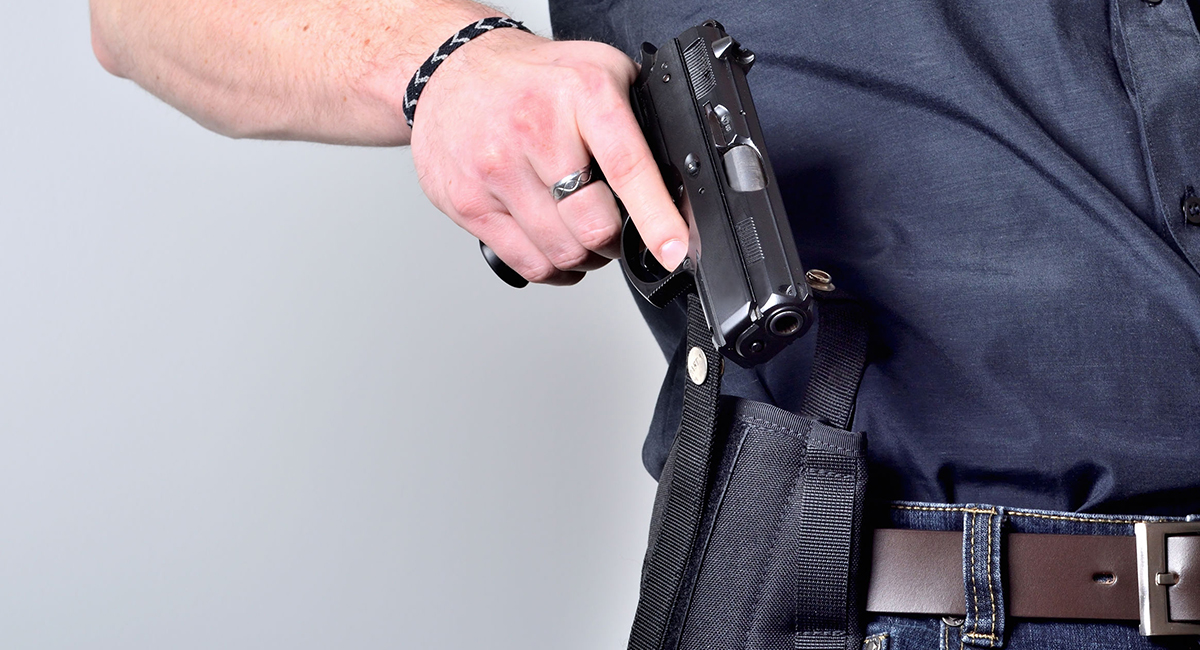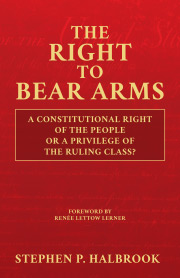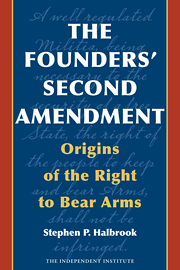Several decisions have been rendered recently on whether persons aged 18 to 20 have a Second Amendment right to carry or purchase a handgun or any firearm. I’d like to highlight the March 31, 2023, decision of U.S. district judge Katherine Menendez (D. Minn.), which is one of the most thorough decisions to date on the young-adult carry issue. The case is Worth v. Harrington.
Judge Menendez granted summary judgment to the 18-to-20-year-old plaintiffs who were ineligible for carry permits under Minnesota law. While the Supreme Court held in Bruen that carrying a handgun was within the plain text of the Second Amendment right to bear arms, the state argued that persons under 21 were not considered to be part of “the people” when the Amendment was adopted. Worth rejected that argument for four reasons.
First, “the people” includes “all Americans who are a part of the national community,” which includes persons eighteen and older. That phraseology originated in the Supreme Court case of U.S. v. Verdugo-Urquidez (1990), which equated the meaning of “the people” in the First, Second and Fourth Amendments. Worth agreed with the textual analysis in Firearms Pol’y Coal. v. McCraw (N.D. Tex. 2022), which invalidated the Texas law requiring permit holders to be at least 21.
Second, neither the Second Amendment nor any other provision in the Bill of Rights sets an age limit. But the Founders knew how to set age limits when intended—the Constitution requires minimum ages for eligibility to be a Representative, Senator, or the President.
Third, “the people” as used elsewhere in the Bill of Rights includes persons eighteen and over. The First and Fourth Amendments are not interpreted to exclude 18-to-20-year-olds.
Fourth and finally, Founding-era militia laws in every colony and early state, and in the federal Militia Act of 1792, required males 18 and over to provide their own arms and to enroll in the militia. “And the fact that the Second Amendment itself discusses the ‘well regulated militia’ means the age-range of militia laws is of particular relevance to the reach of its protections.”
While not relevant to the original understanding of the Second Amendment and thus not mentioned by the court, the Twenty-Sixth Amendment, ratified in 1971, prohibits denial of the right to vote to persons eighteen years of age or older. The demand for that right originated in the World War II generation and was consummated by the Vietnam War generation. The thought was that you are old enough to vote if you are old enough to bear arms in war. By the same token, you should be considered old enough to bear arms in peacetime.
As to the state’s arguments, Judge Menendez noted that while the duty to be armed did not in itself create a right to be armed—the right was a pre-existing one—in context it certainly implied that those in the militia had such a right. And no, recognition of the right for 18-year-olds doesn’t imply that toddlers and those adjudicated mentally unfit have the right. Finally, while the age of majority was 21 for some purposes at the Founding, eligibility to take an oath was 12, to receive capital punishment was 14, and to get married for a female was 12.
Before considering historical analogues, Worth offers a few reflections on methodology. While “judges are not historians,” Bruen preferred “a historical inquiry” because means-end scrutiny presents “a greater threat.”
Moreover, Bruen directs judges to resolve controversies through the adversarial process, “based on the historical record compiled by the parties.” (That’s why, as this author has argued, courts should not appoint expert witnesses to do that.) Judge Menendez cautions that courts with the same issue could reach different conclusions not based on a complete, accurate record, but on expert witness availability or the abilities of counsel before the court.
But post-Bruen experience has seen litigants on both sides presenting full records to the courts. For decades, litigants on the anti-Second Amendment side have been well-financed and supported, often pro bono, by some of the nation’s leading law firms. Litigants on the pro-Second Amendment side have benefitted by decades of commitment to what they believe to be an important constitutional right. The Worth decision itself reflects superior lawyering in presenting the historical record and superior judging in resolving the issue based on that record.
Judge Menendez next weighs in on the ongoing debate about which original understanding counts—1791 or 1868? Bruen wrote that “we have generally assumed that the scope of the protection applicable to the Federal Government and States is pegged to the public understanding of the right when the Bill of Rights was adopted in 1791.” On that point, see Mark Smith’s “Attention Originalists: The Second Amendment Was Adopted in 1791, Not 1868.”
But NRA v. Bondi (11th Cir. 2023) decided that historical sources from Reconstruction are more probative of the Second Amendment’s scope than those from the Founding. Per Worth, that contradicted Bruen’s indication that 1791 is the critical date. Moreover, none of the historical records in Bondi, which upheld Florida’s ban on sale of firearms to persons under 21, would support a ban on persons under 21 carrying firearms. That even included laws from Reconstruction and later.
Worth considered and rejected two expert reports proffered by the state. First was the declaration of Saul Cornell, who argued that persons under the age of majority had “no unfettered right” to bear arms because Yale in 1800 and two other colleges prohibited students from possessing firearms. But as Judge Menendez notes, “none of these proposed analogues appears to be the product of a legislative body elected by founding-era voters, but instead they are rules established by the institutions’ boards of trustees or other leadership.”
Not to mention that few people attended higher education in those days. Such policies say nothing about the original public understanding.
Municipal ordinances restricting the discharge of firearms, which generally applied to all persons, also give no support to the carry ban. There simply were no Founding-era laws restricting 18-to-20-year-olds’ carriage of firearms.
As Worth notes, “Professor Cornell testified that he was aware of no such laws, but deemed the inquiry a ‘bad question.’” To “understand the Second Amendment,” he argued, one must “canvass a variety of historical topics,” and not adopt a “discredited ‘tunnel vision’ approach to historical analysis.” Glittering generalities anyone?
But Bruen instructs that when a restriction addresses a social problem that has persisted since the 18th century, the lack of a similar historical restriction is evidence that the modern one may violate the Second Amendment. While it could be “sound to consider the context Professor Cornell referenced, the Court cannot discern how to incorporate that context into Bruen’s mandated approach to analogical reasoning.” Under Bruen, it is “laws on the books” that matter, not a historian’s opinion about abstract social mores.
The court ended the historical discussion by brushing off Reconstruction-era analogues as too far removed from the Founding, not to mention that none of them prohibited carriage of firearms by 18-to-20-year-olds.
The other expert report submitted by the state was that of Professor John J. Donohue, who argued that the “neurobiological and behavioral development” of “young adults” caused them to commit higher rates of violence, and thus justified limitations on their access to weapons. Should he have included young adult females in that generalization? No. And did he mean to suggest that a large percentage of young adult males commit acts of violence? They do not.
But such issues don’t matter, for as Worth decided, “whatever the evidence may reveal about the wisdom behind enacting a 21-year-old requirement for publicly carrying a handgun, such analysis belongs to a regime of means-end scrutiny scuttled by Bruen.” The days of judges imposing their subjective value judgments about public policy through intermediate scrutiny are over.
So it’s back to basics for the courts. Judges decide questions of constitutionality. They do not delegate that authority to “experts” who think that the Founding-era understanding as expressed in actual laws is irrelevant, or that a constitutional right takes second place to good social policy. Judge Menendez’s decision in Worth is an exemplary model of how to decide Second Amendment cases.
The bottom line is that the state of Minnesota was enjoined “from denying a permit to carry a pistol from an otherwise-qualified applicant who is at least 18 years old.” The state’s motion to stay the injunction is pending at the time of this writing. As cases from different courts percolate, the ultimate decision will come from the Supreme Court.
















